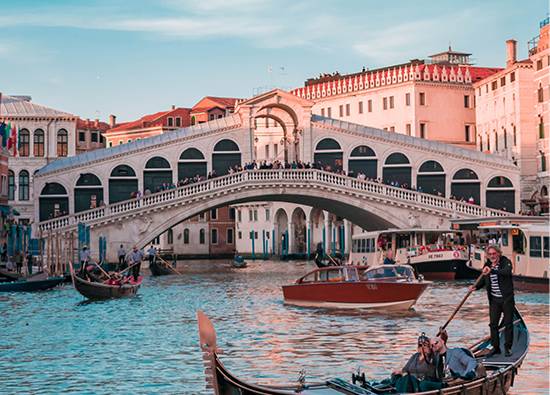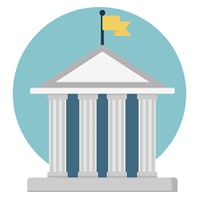- Universities
- University of Kerala Senate House Campus, Palayam Thiruvananthapuram - 34, Kerala, India
About the University
The history of the University of Kerala is integral to the history of the state itself. One of the first 16 Universities in India, the University of Kerala was founded in 1937. It was formerly called the University of Travancore in the erstwhile princely state of Travancore (now southern part of Kerala and some neighbouring parts of state of Tamilnadu). The University came into being by a promulgation of the Maharajah of Travancore, Sri ChithiraThirunal Balarama Varma who was also the first Chancellor of the University. Sir C. P Ramaswamy Ayyar, the then Diwan (Prime minister) of the State was the first Vice-Chancellor. He was an eminent scholar and an able administrator. It is said that the Government made an unsuccessful attempt to invite Albert Einstein to be the first Vice-Chancellor. The University was modelled after the best Universities of the United Kingdom, and even today retains some of these features. The affiliating system of the University however evolved differently from the college system in British Universities.
The earliest origins of the University may be traced back to two institutions of modern learning in Kerala – the University College, Thiruvananthapuram and the Trivandrum Observatory. The University College was initially founded as the Maharaja’s Free School by Maharaja Swathi Thirunal in 1834, with Mr John Roberts, a Christian Missionary as Headmaster, and soon grew into a college in 1866, affiliated to the Madras University. When the University of Travancore was founded, the departments of the college became University departments, only to switch back again when the transformation to University of Kerala happened in 1957. The University College still retains its connection with the University as an affiliated college. The Trivandrum Observatory was founded in 1838 and had an internationally reputed scientist, John Caldecott FRS as its first Director. It became a part of the Travancore University, but was administered as an independent government institution for some time. It is now the oldest institution under the Kerala University.
CAMPUSES
Ten colleges within the State of Travancore, which were at that time affiliated to the Madras University, became the affiliated colleges of the University of Travancore. In 1954, the unified state of Kerala came into being with most of Travancore, Cochin, and the Malabar area of the Madras presidency becoming part of it. The Kerala University Act (Act 14 of 1957) was brought into force and the University of Travancore was renamed University of Kerala. The University had three campuses located in three different parts of the State viz. Thiruvananthapuram, Ernakulam and Kozhikode. The number of affiliated colleges grew phenomenally. However, in 1968, the University Centre at Kozhikode became a full-fledged University, the University of Calicut, affiliating the colleges located in Thrissur, Palakkad, Kozhikode and Kannur districts of Kerala. The Cochin University of Science and Technology or CUSAT (1971), Kerala Agricultural University (1971) and Mahatma Gandhi University (1983) were subsequently established, with CUSAT taking over the University’s centre at Cochin. These developments have shrunk the jurisdiction of the University of Kerala to Thiruvananthapuram, Kollam, Alappuzha Districts and some parts of Pathanamthitta District.
At present, the University has sixteen faculties and forty-four departments of teaching and research in addition to study centres and other departments. Teaching, research and knowledge extension are the mandates of the departments. They primarily focus on post-graduate (masters) programmes, MPhil programmes (1-year research degree) and doctoral research. (University’s research activities are also going on in select affiliated colleges and other recognised research centres in and outside the state). The University has had as its faculty eminent scholars who were trained under legendary figures (Sir C. V. Raman’s student in Dept of Physics, Prof S R Ranganathan’s student in Library Science and Prof Benjamin Bloom’s student in Dept of Education). Some of the faculty members themselves were legends, such as the renowned poet K Ayyappa Panciker and the Oriental Studies scholar T Ganapathi Sasthri among many others. The total number of full-time students in the University Departments is above 2000 including research students, along with a modest number of foreign students. The Institute of Distance Education offers a number of under-graduate and post graduate programmes which cater to more than 10,000 students, all over the country and abroad.
The University has also a number of study centres in specialised areas such as Nano-technology, Kerala Studies, Bioinformatics, Women’s Studies, Learning Difficulties, Sree Narayana Studies, Gandhian Studies etc. Some of these centres have taught programmes (Certificate/Diploma/Masters/MPhil) and many offer PhD programmes. The University has also established 10 University Colleges of Teacher Education (UTEC) and 8 University Institute of Technologies (UIT) which offer under-graduate programmes (BEd in UTECs and BSc Computer Science/IT, Electronics/BBA in UITs), along with masters programmes available in select UITs. The University College of Engineering at Karyavattom offers Engineering Education at Undergraduate level. These institutions together have a student strength of more than 5000. The University has over 180 affiliated colleges. The role of the University is in prescribing courses of study and conducting examinations and issuing certificates. The day-to-day administration of these institutions is not under the purview of the University. However, these institutions form a major part of the University. There are 110 Arts and Science colleges, 7 Law colleges, 1 Engineering Colleges, 9 MBA, 4 MCA Colleges, 48 Teacher Training Colleges, 3 hotel management, 2 Fine Arts Colleges, 1 Music College and a fashion technology institute. The University also has a National College of Physical Education affiliated to it. The total number of students in these colleges crosses 95,000.
Amenities
- Alarm System
- Canteen
- Car Parking
- Computer Lab
- Discipline Committee
- Libraries
- Security Cameras
- Sports Facilities
- Time Table
- Wireless Internet
Tags
Opening Days
Additional info


